The first contact that French musician Jean-Michel Jarre had with outer space dates back to his childhood, when he became totally obsessed with a tape recorder. It was a 10th birthday present from his grandfather, an oboe player, engineer and inventor.
“One day I played the tape backwards and I thought that aliens were talking to me,” recalled the pioneer of electronic music.
It is this unorthodox but enthusiastic embrace of technology, even the latest types like artificial intelligence, that Jarre, now 75, has pursued to this today.
“Technologies are bringing us tools to actually express human emotions,” said Jarre, recalling that, for example, 300 years ago Vivaldi was able to compose entirely new music thanks to the more modern construction of the violin. “It’s very important not to be scared of innovation.”
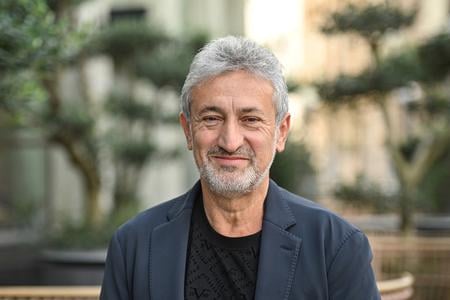
Jarre will be one of headliners at the next Starmus festival, a major international event that combines science, art and music. Its seventh edition, whose main partner is the cyber security firm ESET, will take place in several Slovak cities from 12 to 17 May, with the main programme taking place in Bratislava. This time it will focus on Earth. Under the rubric The Future of Our Home Planet, it promises to bring, in addition to Jarre, punk rock band The Offspring, Queen guitarist and astrophysicist Brian May, biologist Jane Goodall – renowned for her study of primates – and science populariser Bill Nye.
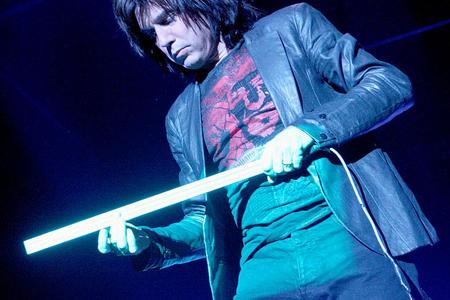
Jarre is famous for his spectacular concerts, which combine music with laser displays, projections and even fireworks. The Slovak Spectator spoke with the artist – who believes that astrophysics and music, or, more generally, science and art, have a lot in common – about music, artificial intelligence – and what is he preparing for his concert in Bratislava.
When you hear music – your own music or music in general – do you see it already in colours and with visual elements?
I have always done so, because I hesitated between painting and music. So I always approach music in a very visual way, in a kind of non-figurative or abstract type of vision. For me, electronic music is very close to abstract painting. It’s like cooking, when you combine various ingredients. In abstract paintings you combine oil and textures and in music you deal with frequencies and waveforms, creating your own recipe. Technology can bring you to a very organic and sensual result. This is the opposite to what lots of people think, considering technology to be cold and robotic. In my case, technology helps me to be more sensual or sensitive, more emotional, and to express emotions even more. Actually, when I first released Oxygène [his pioneering 1976 album – Ed. note], for instance, a majority of people had no idea about how this music was done. They didn’t know about synthesizers, so for them it was not electronic music. It was just music, a different kind of music.
Do you use artificial intelligence (AI) for creating music, or can you imagine doing so?
Technology is neutral and AI is going to be a big revolution in terms of our day-to-day life. For artists, it’s an opportunity like any kind of technological tool. Let’s look at where musical ideas are coming from. They come from harvesting your analogue big data, which is partly your memories, recollections, your family, your environment, your friends, the music you know, et cetera. AI is also only looking at the past. It’s, in a sense, an extension of your imagination, for you or an artist, and for me. It is a very exciting tool. I remember that when electronic music was played for the first time in the French Opera – I was a student at that time – people from the Symphony Orchestra were unplugging speakers because they thought that it would be the end of orchestras. It’s always like this. AI will generate new art forms and we should not be scared of it.
Why do you urge us to look into the future and not be afraid of new technologies? Because of a lot of people are afraid.
It is probably in the human DNA to think that yesterday was better and tomorrow is going to be worse. This is probably because we have a necessarily dark vision of the future, because we know that at one moment we’re not going to be part of it. It’s really psychological. But I’m driven by curiosity. I’m not really interested by what I’ve done, but more what I could do with the tools I have. And what is also interesting is that I’m actually convinced more and more that interesting things in art are based on accidents, on taking instruments or existing technology and doing something else with them. Like Picasso, for instance. He did not follow the rules, he took what was happening around and stole things to create his own style. This is what I’m interested in as an artist.
From where do you take inspiration? Sounds in the street, nature, people, new music, old music?
Your question is my answer. Yes, from absolutely everything – the conversation we just have, the sound of the rain on the window, the lights in the street, music I heard on the radio. All these random elements are going to have an influence on my day-to-day life as a musician.
You have a big collection of musical instruments. One of these instruments is a theremin.
Yes, it’s an amazing instrument. My laser harp was influenced heavily by the theremin. There is something magical about creating sounds without touching anything tangible, like lights. The theremin is a perfect example of how technology can bring poetic elements to music and a musician.
Do you still play the theremin?
It’s funny that you mention this because Moog [the American synthesizer company Moog Music – Ed. note] recently sent me a new theremin it had designed. I have the old one, but the new one is very interesting. You can actually create lots of different sounds, not just the sine wave sound; you can have bass sounds, there are also filters and delays inside. I’m very happy, I have it in my studio. I have to practice a little more, which is time consuming.
You have a Slovak fujara in your collection, too. Have you tried to play it?
I did twice. It’s difficult. This is the same thing. You have to develop a technique for everything. So it’s time consuming. But it’s a very interesting instrument.
It’s waiting for its time.
Yes. I hope.
What are you preparing for your concert in Bratislava during the Starmus festival?
This edition of Starmus will be dedicated to space, and the best way to understand space is to understand our own planet. It could be interesting to focus on the planet from the scientific point of view and also from the musical or artistic point of view.
Then the fact that the festival will be held in Bratislava, in the heart of Europe, during these dark days of the war, is not neutral for me. More than ever we need science, education and art to soothe the pain and to get to organise the resistance in a peaceful, but active, way.
That’s one thing. The other one is that for too long we separated production and distribution in Europe, saying: 'OK, we can produce, with the talent we have, the best music, the best movies, the best books.' But if the distribution is out of our control and more and more under the control of the US or China, it’s the end of our specificity, the end of our own vision that we can share with the world. With Starmus taking in such a place as Slovakia and Bratislava, we can send a message, to produce something unexpected. It could be more difficult, for different reasons, to achieve this in such places as New York, Los Angeles, London or Paris.
It’s unexpected to create something that could really have an instant worldwide resonance in Slovakia. There will be gathered the most brilliant scientists and artists – it will be, I would say, an artistic Davos.
Do you plan to do something like the concert from the virtual Notre Dame, streamed across the whole world?
Yes. We are actually thinking about different things. I have lots of friends and personal connections here in Bratislava as I have played here before. It’s really an honour and I’m very excited to create something here.
Is there a difference for you between playing a virtual concert, like the concert in the virtual Notre Dame, and a real live concert?
A specific feature of the virtual world is that you have no gravity, so you can create scenography in a totally different way, you can achieve things in the virtual reality (VR) world that you cannot achieve in the real world. Also, there is a social aspect, as you can address people all around the world. Because we should never forget that the avatars in the virtual world are real people who are gathering in the same virtual world through their digital twins. Then it’s a fantastic possibility to enable people who cannot attend, either for geographical reasons or because of disability, to be part of the concerts.
I will tell you one anecdote. It happened on one of the last VR projects I did, with Oxymore. It was live in the virtual world and at the end of the concert I went into the VR world using the headset. There were lots of people, for instance, from Brazil or China, in the same room. One girl was very enthusiastic and asking lots of questions. After a while I asked her where she was. She was in Manchester, in the UK, and I discovered by talking to her that she was tetraplegic. It was the first concert that she could be part of, and she was dancing all night.
Jean-Michel Jarre
Jean-Michel André Jarre, 75, is a French composer, performer and record producer. He is a pioneer in the electronic, ambient and new-age genres, and is known for organising outdoor spectacles featuring his music, vast laser displays and fireworks.
Jarre was raised in Lyons by his mother and grandparents and trained on the piano. From an early age, he was introduced to a variety of art forms, including street performers, jazz musicians and the artist Pierre Soulages. He played guitar in a band, but his musical style was perhaps most heavily influenced by Pierre Schaeffer, a pioneer of musique concrète at the Groupe de Recherches Musicales.
His first mainstream success was the 1976 album Oxygène. Recorded in a makeshift studio at his home, the album sold an estimated 12 million copies. Oxygène was followed in 1978 by Équinoxe, and in 1979 Jarre performed to a record-breaking audience of more than a million people at the Place de la Concorde in Paris, a record he has since broken three times. More albums were to follow, but his 1979 concert served as a blueprint for his future performances around the world. Several of his albums have been released to coincide with large-scale outdoor events, and he is now perhaps as well-known as a performer as he is as a musician.
As of 2004, Jarre had sold an estimated 80 million albums. He was the first Western musician officially invited to perform in the People’s Republic of China and holds the world record for the largest-ever audience at an outdoor event.
Jean-Michel Jarre has previously visited and played in Slovakia three times: in 2008, 2010 and 2016.
Source: Starmus website and The Slovak Spectator


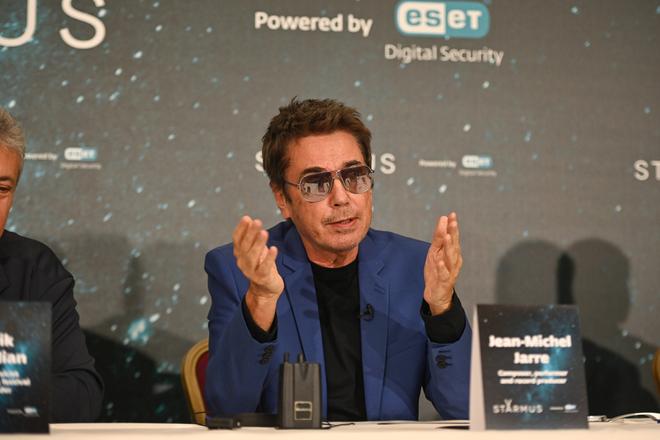 French musician Jean-Michel Jarre will be one of headliners of the Starmus festival. (source: ESET Science Award/Linda Kisková Bohušová)
French musician Jean-Michel Jarre will be one of headliners of the Starmus festival. (source: ESET Science Award/Linda Kisková Bohušová)
 Jean-Michel Jarre in Bratislava in 2016 (source: Sme)
Jean-Michel Jarre in Bratislava in 2016 (source: Sme)
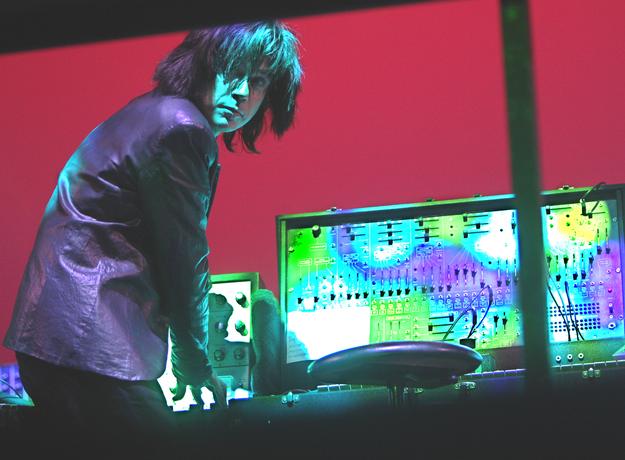 Jean-Michel Jarre in Bratislava in 2008 (source: Sme)
Jean-Michel Jarre in Bratislava in 2008 (source: Sme)
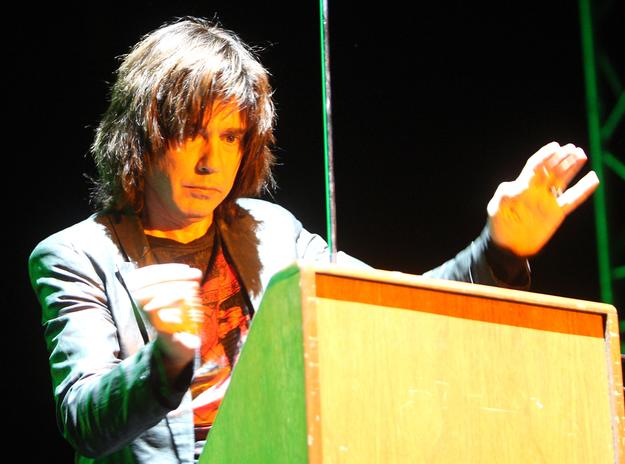 Jean-Michel Jarre playing theremin in Bratislava in 2008. (source: Sme)
Jean-Michel Jarre playing theremin in Bratislava in 2008. (source: Sme)